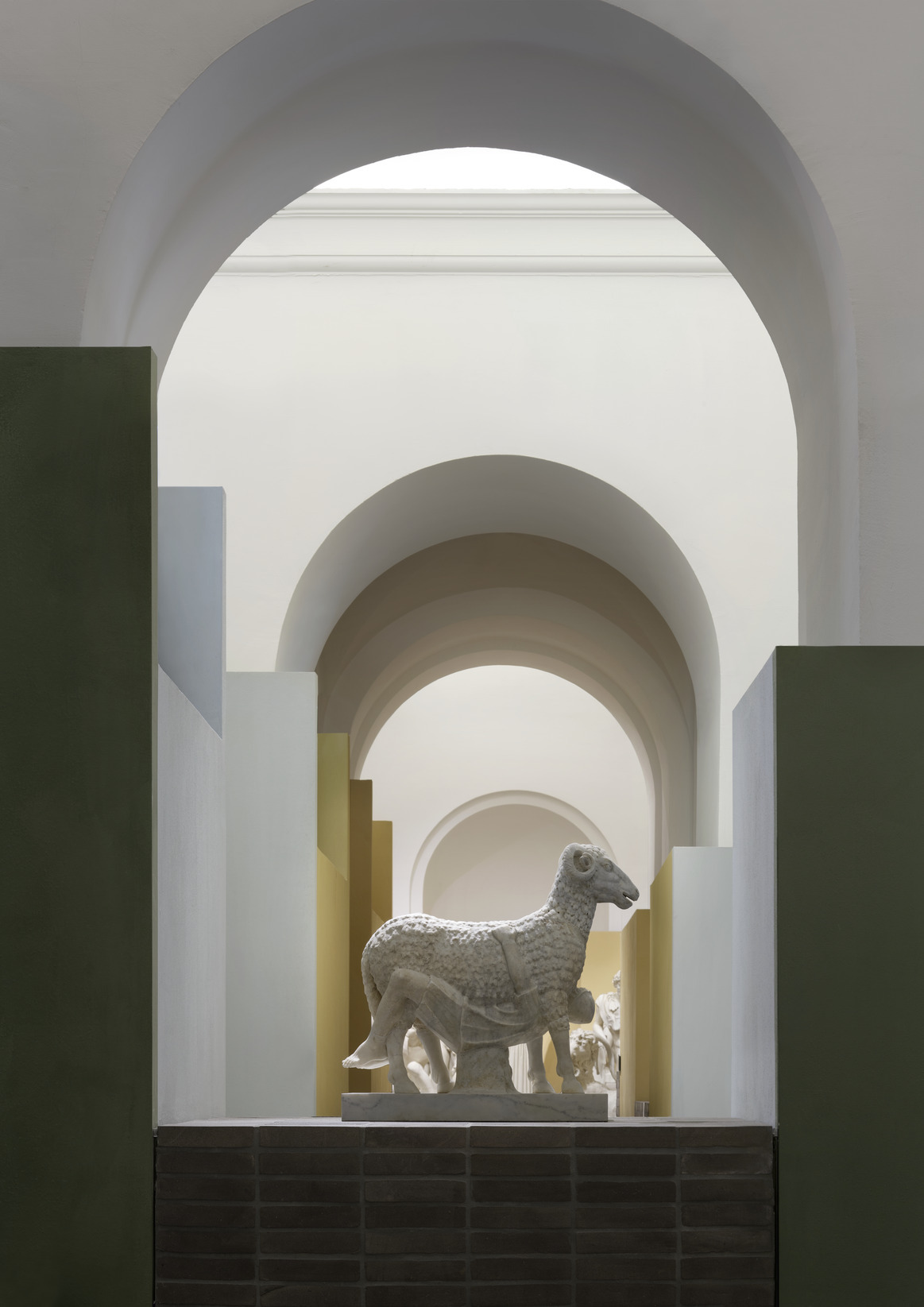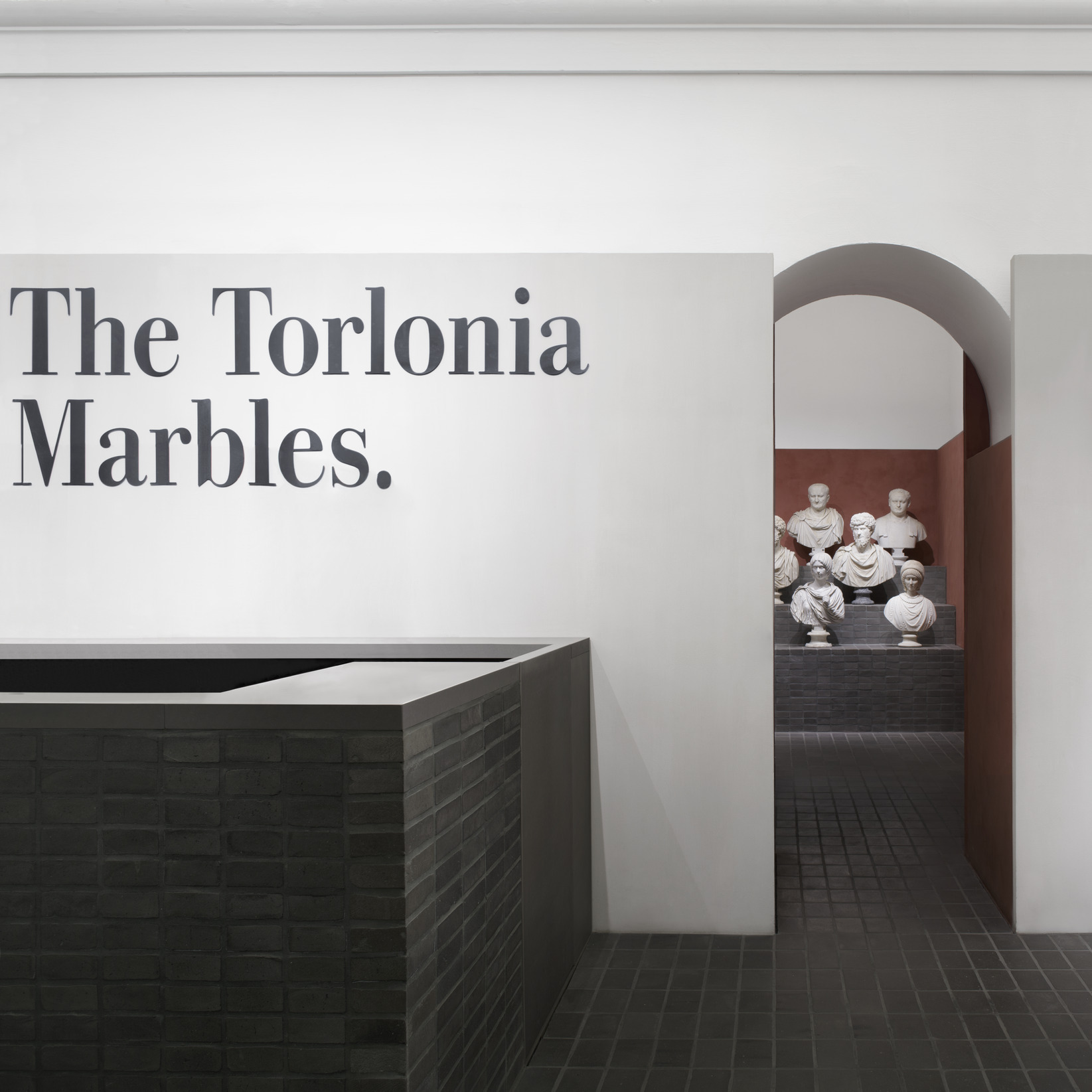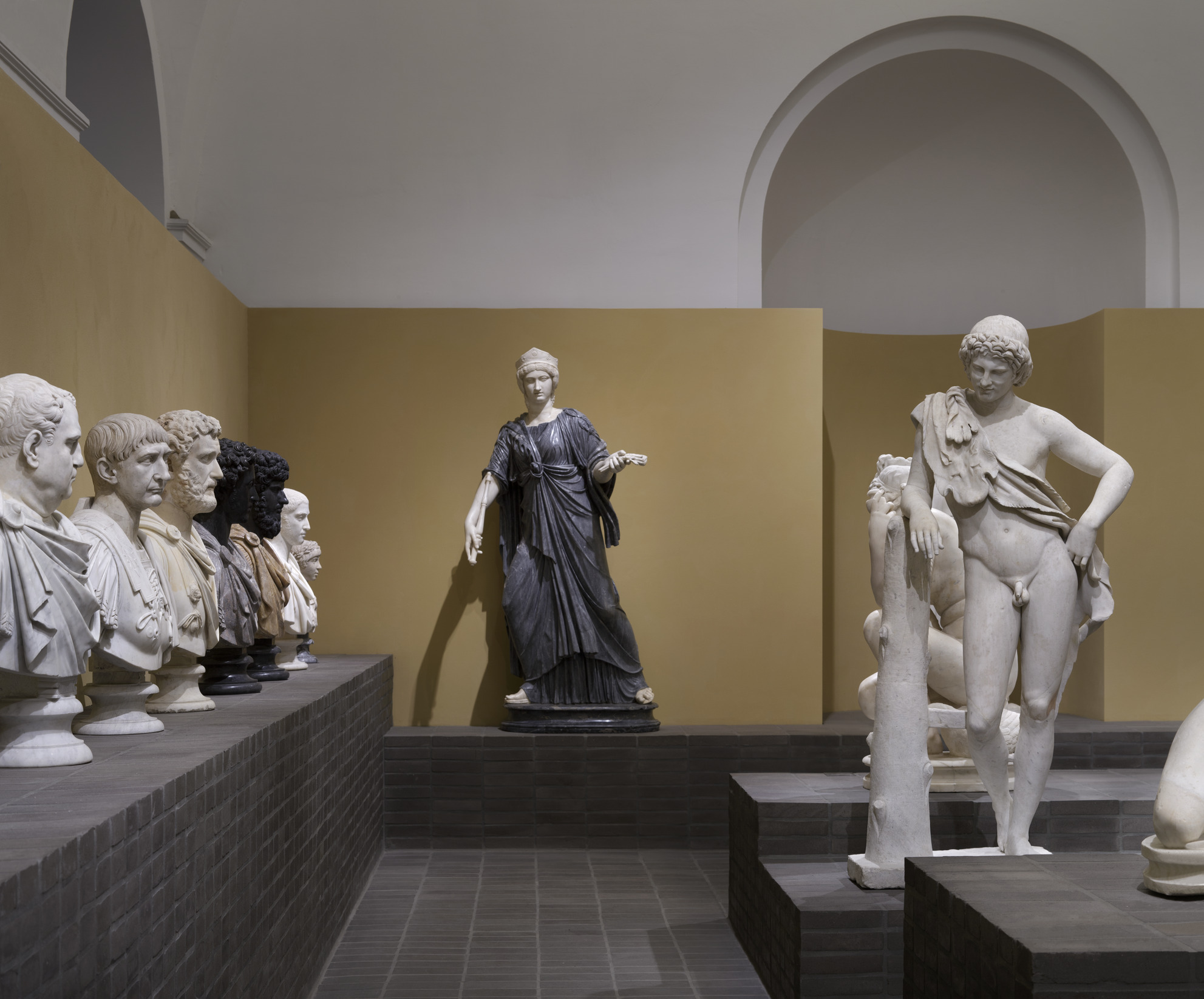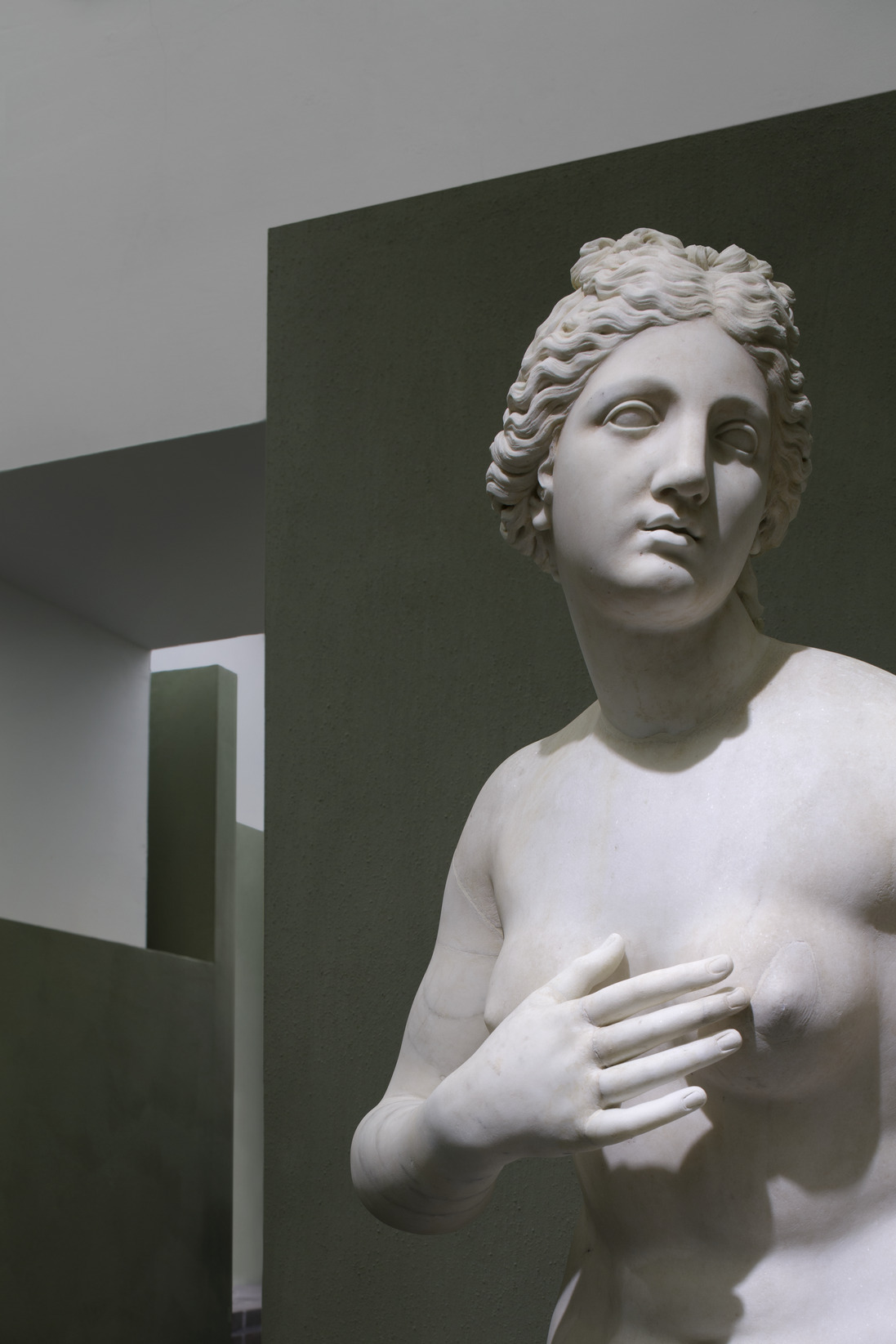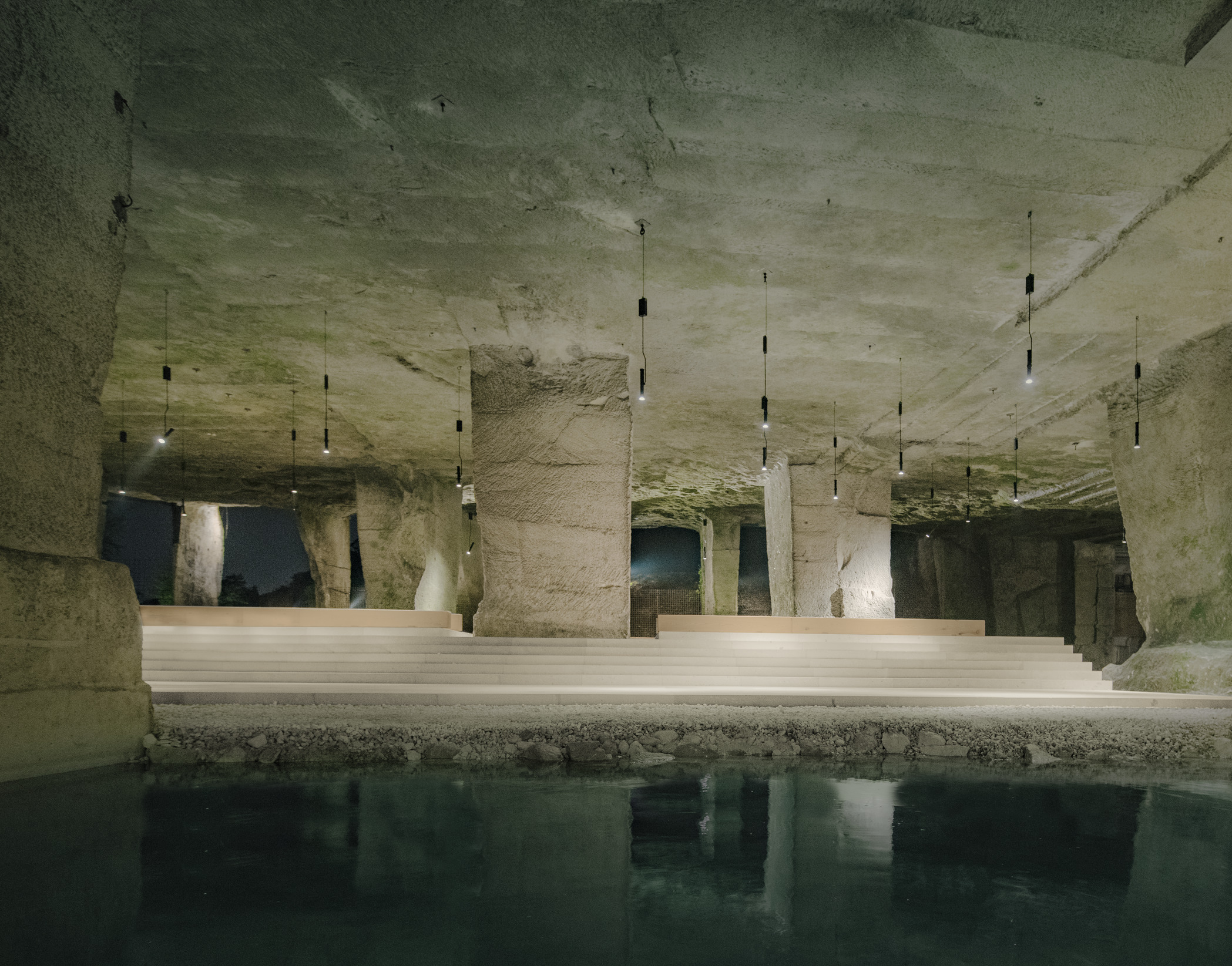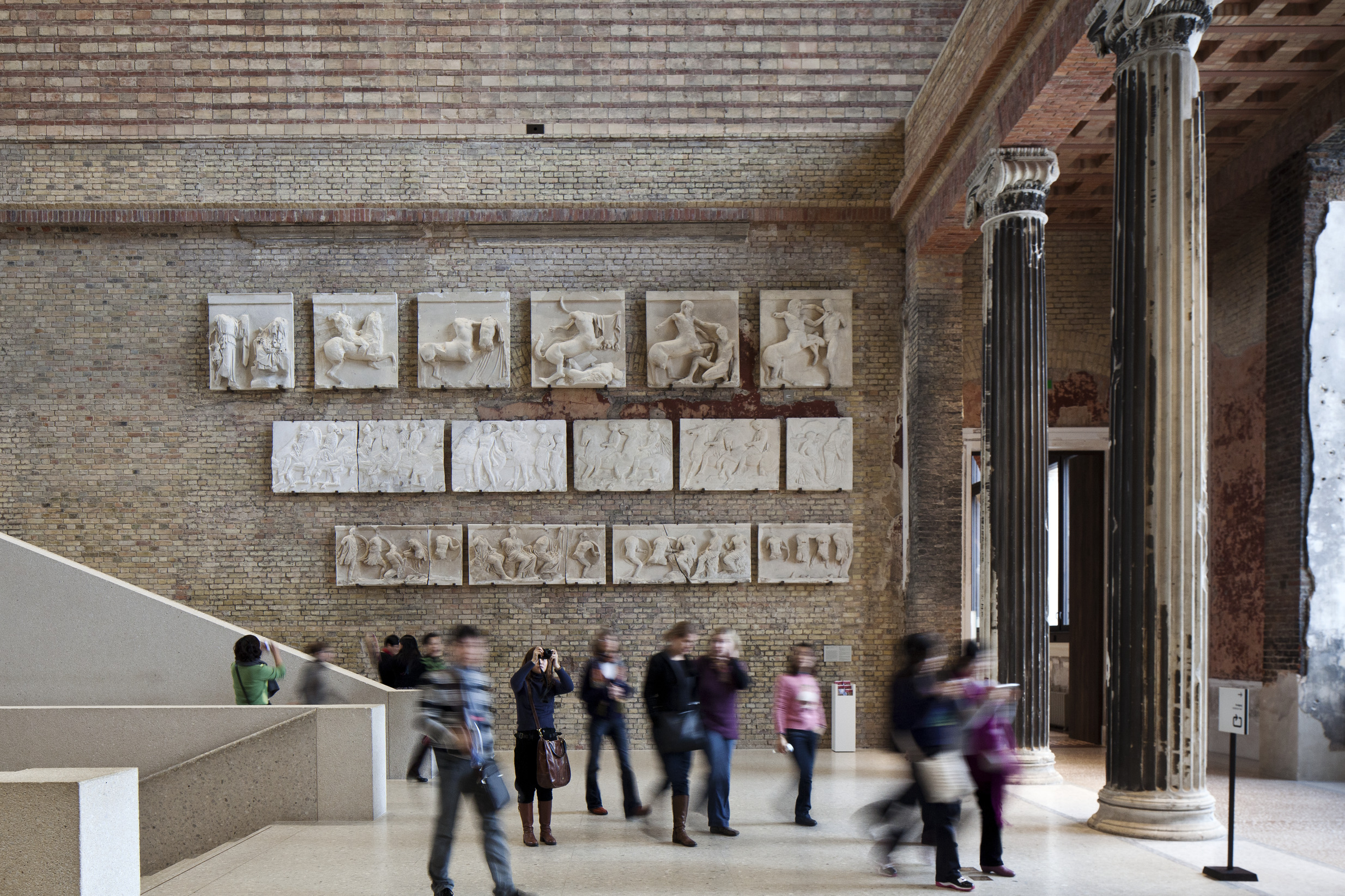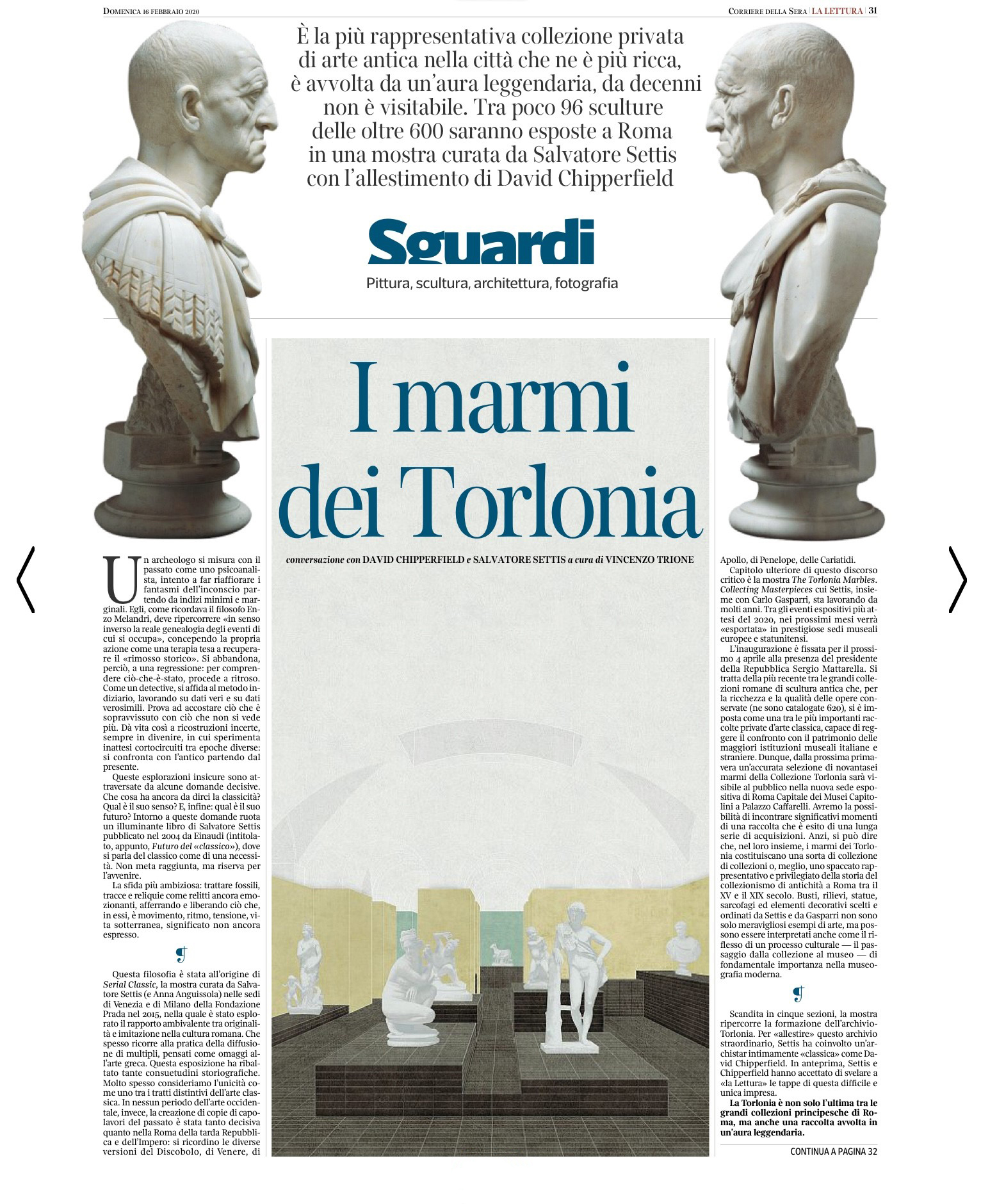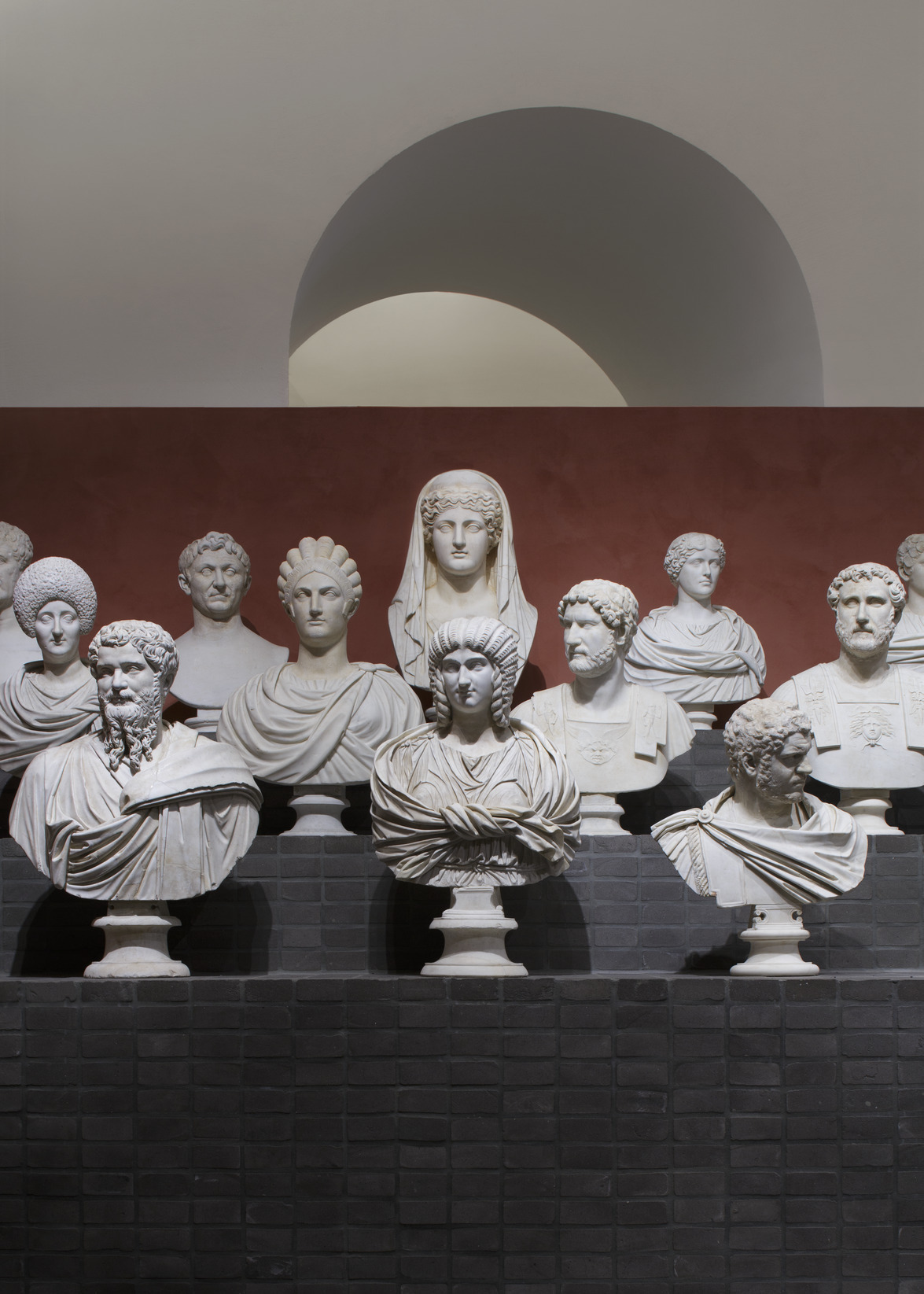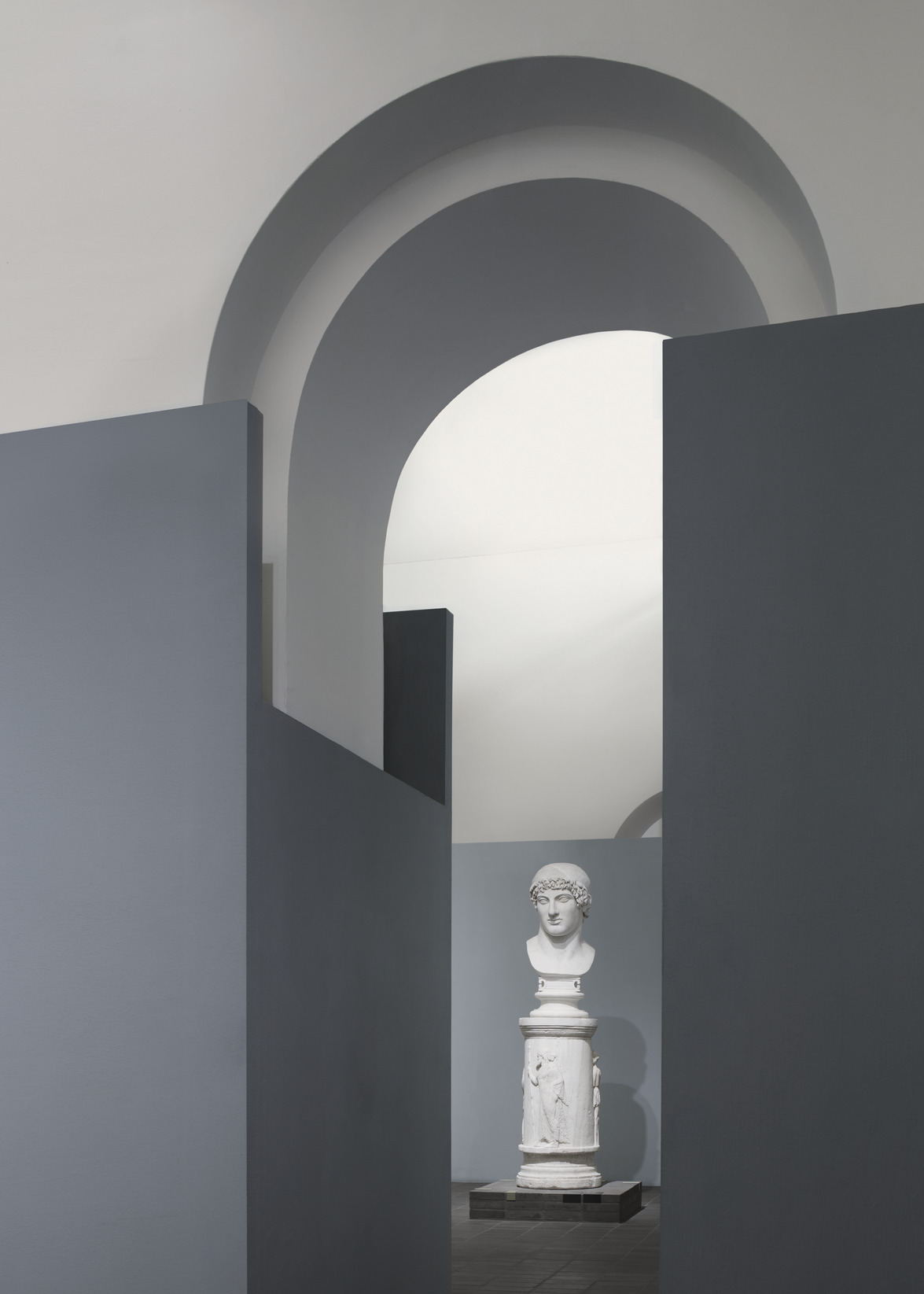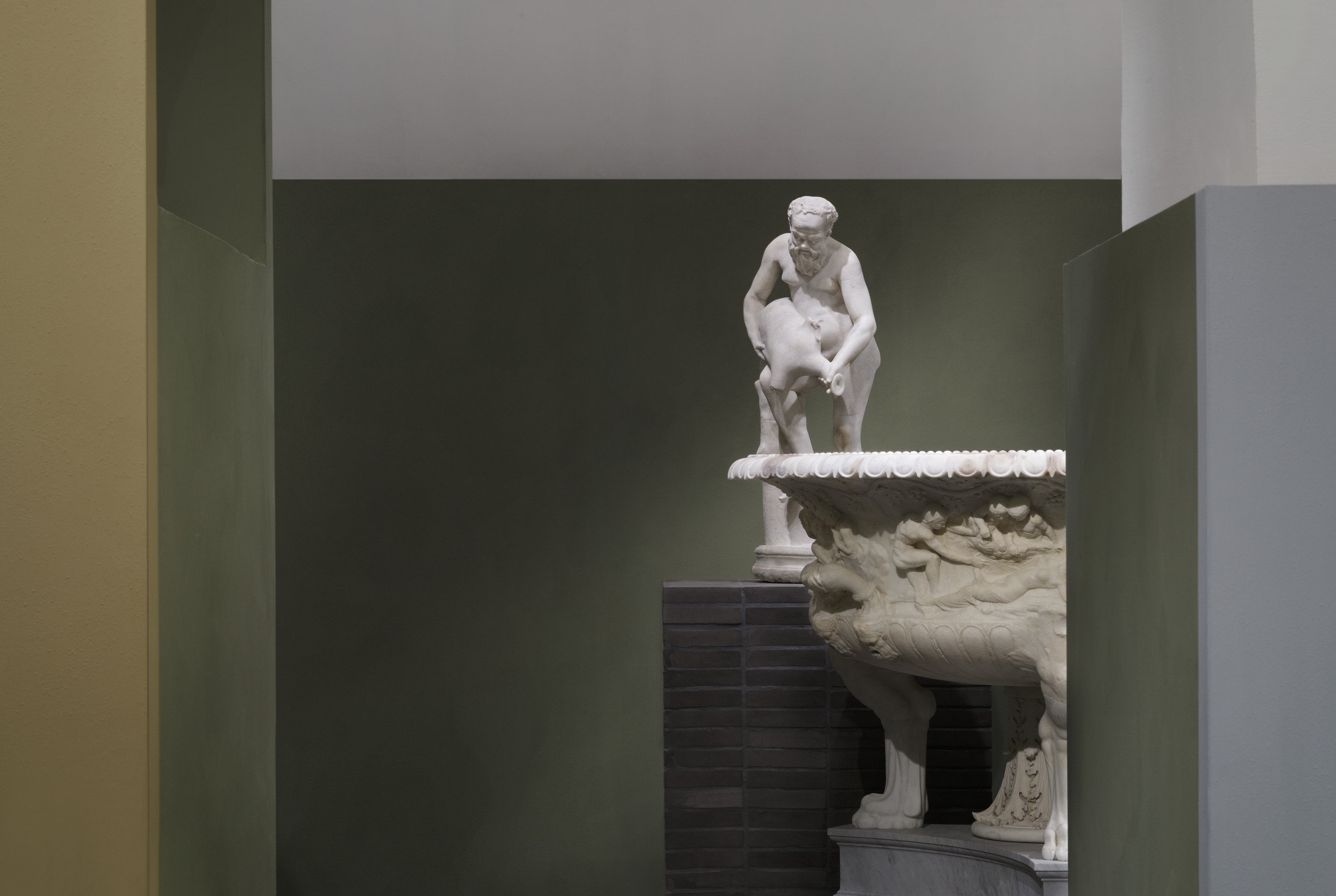The Torlonia Marbles: Collecting Masterpieces
Rome, Italy
2017–20
The Torlonia collection is one of the world’s most significant collections of ancient sculptures, but it had not been on public display for over 40 years. A selection of 96 works from the 620 contained in the collection was shown in an exhibition at the Palazzo Caffarelli (1584) on the Capitoline Hill in Rome between October 2020 and February 2022.
The exhibition design was inspired by the renowned printed catalogue of the Torlonia Museum (founded by Prince Alessandro Torlonia in 1875) that was published in 1884/1885, in which the works are presented on a black background. The floors and plinths of the exhibition are therefore made from black bricks hand-made using dark grey clay, allowing the works to stand out. Freestanding coloured walls are used to define the different sections of the exhibition, which is divided into five chapters to illustrate the chronological evolution of the Collection and at the same time place the sculptures within the context of their historical period. The upper walls and ceiling are painted a neutral white.
The brick floors and plinths reference both ancient Roman brick architecture through their materiality and, with their extrusions of differing heights, the stone foundations of the Aedes Iovis Optimi Maximi Capitolini, the large building that existed on the site of the Villa Cafarellius. The plinths are conceived as extrusions of the flooring and are architectural structures having the function of a base rather than pedestal.
With their neutral character the plinths form the foundations of the works which are displayed and presented to the visitor. The three-dimensional and tectonic building elements emphasise both the variety of the Torlonia Marbles and the stratification of the Capitoline Hill.
Data and credits
- Project start
- 2017
- Completion
- 2020
- Gross floor area
- 730 m²
- Client
- Mondadori Electa SpA
- Architect
- David Chipperfield Architects Milan
- Partners
- David Chipperfield, Giuseppe Zampieri
- Associate Directors
- Cristiano Billia
- Project architect
- Andrea Cocco, Daniel Mira García, Tiziana Staffieri
- Project team
- Simone Diego Alessi, Niccolò Brussa, Giacomo Canani, Filippo Carcano, Carlo Federico Cattò, Fabiano Cocozza, Maria Elena Codazzi, Paolo Dell’Elce, Stefano Goffi, Tsukasa Goto, Nicola Guercilena, Seunggeun Jee, Stefano Penazzi, Giacomo Savegnago, Athena Thrasyvoulou.
- Photography
- Collezione Torlonia © Fondazione Torlonia – photos by Alberto Parise
- Links
- Fondazione Torlonia
